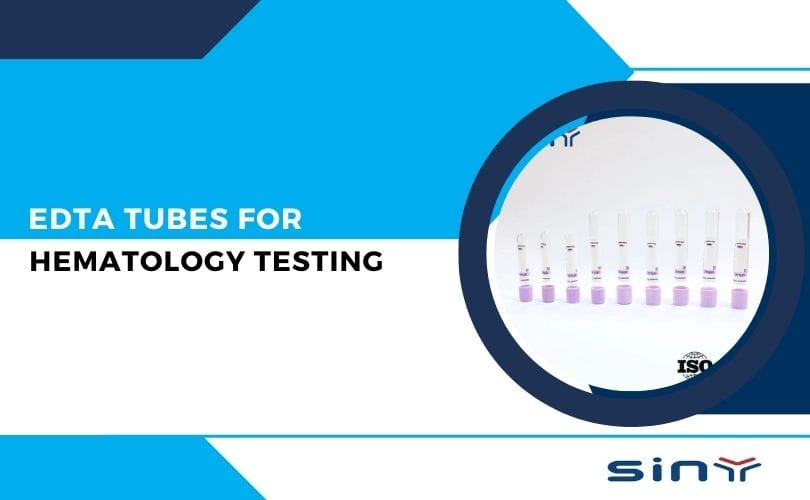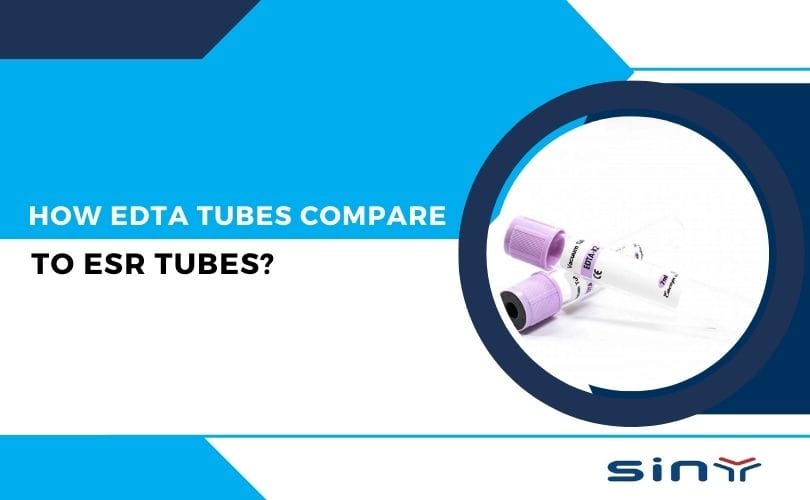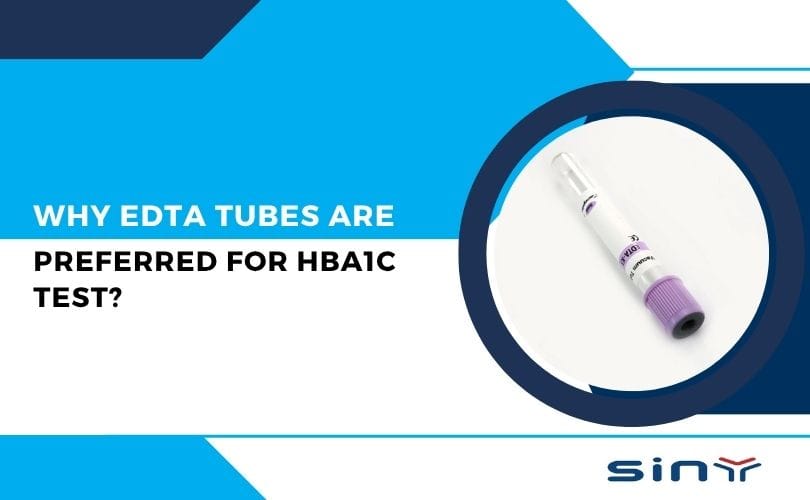Hematology testing is a cornerstone of modern medical diagnostics, providing critical insights into blood-related disorders and overall health. At the heart of this process lies the EDTA tube, a specialized blood collection tube designed to preserve blood integrity for accurate testing. This blog delves into the role of EDTA tubes for hematology, their advantages, applications, and how they compare to other blood collection methods. Whether you’re a healthcare professional or a curious reader, this guide will equip you with the knowledge to understand why EDTA tubes are indispensable in hematology testing.
What Are EDTA Tubes?
EDTA tubes are blood collection tubes containing ethylenediaminetetraacetic acid (EDTA), an anticoagulant that prevents blood clotting by binding calcium ions. These tubes are widely used in hematology testing because they maintain the cellular and molecular integrity of blood samples, ensuring reliable results.
EDTA tubes come in various sizes, typically ranging from 2 mL to 10 mL, and are color-coded with a lavender or pink cap for easy identification. They are manufactured under strict quality standards to ensure consistency and safety in medical laboratories.
For more details on the types and sizes of EDTA tubes available, visit our EDTA Tube Product Category.
Why Are EDTA Tubes Essential for Hematology Testing?
Hematology testing involves analyzing blood components such as red blood cells (RBCs), white blood cells (WBCs), platelets, and hemoglobin. EDTA tubes play a crucial role in this process for the following reasons:
- Prevents Clotting: EDTA inhibits coagulation by chelating calcium ions, ensuring that blood remains in its liquid state for accurate cell counting and analysis.
- Preserves Cell Morphology: Unlike other anticoagulants, EDTA maintains the shape and structure of blood cells, which is vital for microscopic examination.
- Ensures Consistency: EDTA tubes provide standardized conditions for blood collection, reducing variability in test results.
For a deeper understanding of how EDTA tubes compare to other blood collection methods, check out our article on How EDTA Tubes Compare to ESR Tubes.
EDTA Tubes in Hematology
EDTA tubes are indispensable in various hematology tests, including:
- Complete Blood Count (CBC): This test measures RBCs, WBCs, platelets, hemoglobin, and hematocrit. EDTA tubes ensure accurate cell counts and morphology.
- Blood Smear Preparation: EDTA-preserved blood is ideal for preparing thin blood smears for microscopic examination.
- Molecular Diagnostics: EDTA tubes are used for DNA and RNA extraction in genetic testing.
- Flow Cytometry: EDTA-preserved blood is compatible with flow cytometry techniques for cell analysis.
Explore our EDTA Tubes for Blood Collection page to learn more about their applications.
Advantages of Using EDTA Tubes
Using EDTA tubes for hematology testing offers several benefits:
- High Accuracy: EDTA ensures minimal sample degradation, leading to precise test results.
- Versatility: Suitable for a wide range of hematology tests, from routine CBCs to advanced molecular diagnostics.
- Ease of Use: Color-coded caps and standardized sizes make EDTA tubes user-friendly.
- Cost-Effective: EDTA tubes are affordable and widely available, making them accessible for laboratories worldwide.
For a detailed comparison of EDTA tubes with ESR tubes, visit Sinymedical’s ESR Tube Page.
How to Properly Use EDTA Tubes
To ensure optimal results, follow these guidelines when using EDTA tubes:
- Fill the Tube Correctly: Draw blood up to the marked fill line to maintain the correct blood-to-anticoagulant ratio.
- Mix Gently: Invert the tube 8-10 times immediately after collection to ensure proper mixing of blood and EDTA.
- Store Appropriately: Keep the tube at room temperature and process the sample within 24 hours for best results.
For more tips on blood collection techniques, visit our EDTA Tubes for Blood Collection Guide
Where to Buy EDTA Tubes for Hematology
Finding a reliable supplier is just as important as using the right tubes. For premium quality and affordable pricing, you can check:
Wrapping It Up
EDTA tubes for hematology are the backbone of modern blood testing, ensuring precise, reliable, and reproducible results. From CBCs to platelet counts, their role is indispensable in clinical labs. By preventing clotting and preserving cell morphology, EDTA tubes provide accurate insights into patient health.
If you’re setting up a laboratory or simply want the best tools for diagnostics, EDTA tubes are a must-have. For detailed product ranges, visit the official EDTA Tube website, explore Siny Medical’s collection, or reach out via the Contact Us page.
For video guides and demonstrations, check out Siny Medical’s YouTube channel.
FAQs
Why are EDTA tubes purple?
The purple (lavender) cap is an international standard for hematology collection tubes. It helps lab professionals quickly identify anticoagulant type.
Can EDTA tubes be used for ESR tests?
No, EDTA is not recommended for ESR testing. ESR tubes use sodium citrate and have a different ratio requirement.
How long is blood stable in an EDTA tube?
Blood remains stable for about 24 hours at room temperature, but for optimal results, testing within 6–8 hours is best.
What happens if the tube is not mixed properly?
Improper mixing can lead to clot formation, inaccurate counts, or rejection of the sample.
Where can I buy EDTA tubes in bulk?
You can buy directly from EDTA Tube Suppliers or from trusted platforms like Siny Medical.






